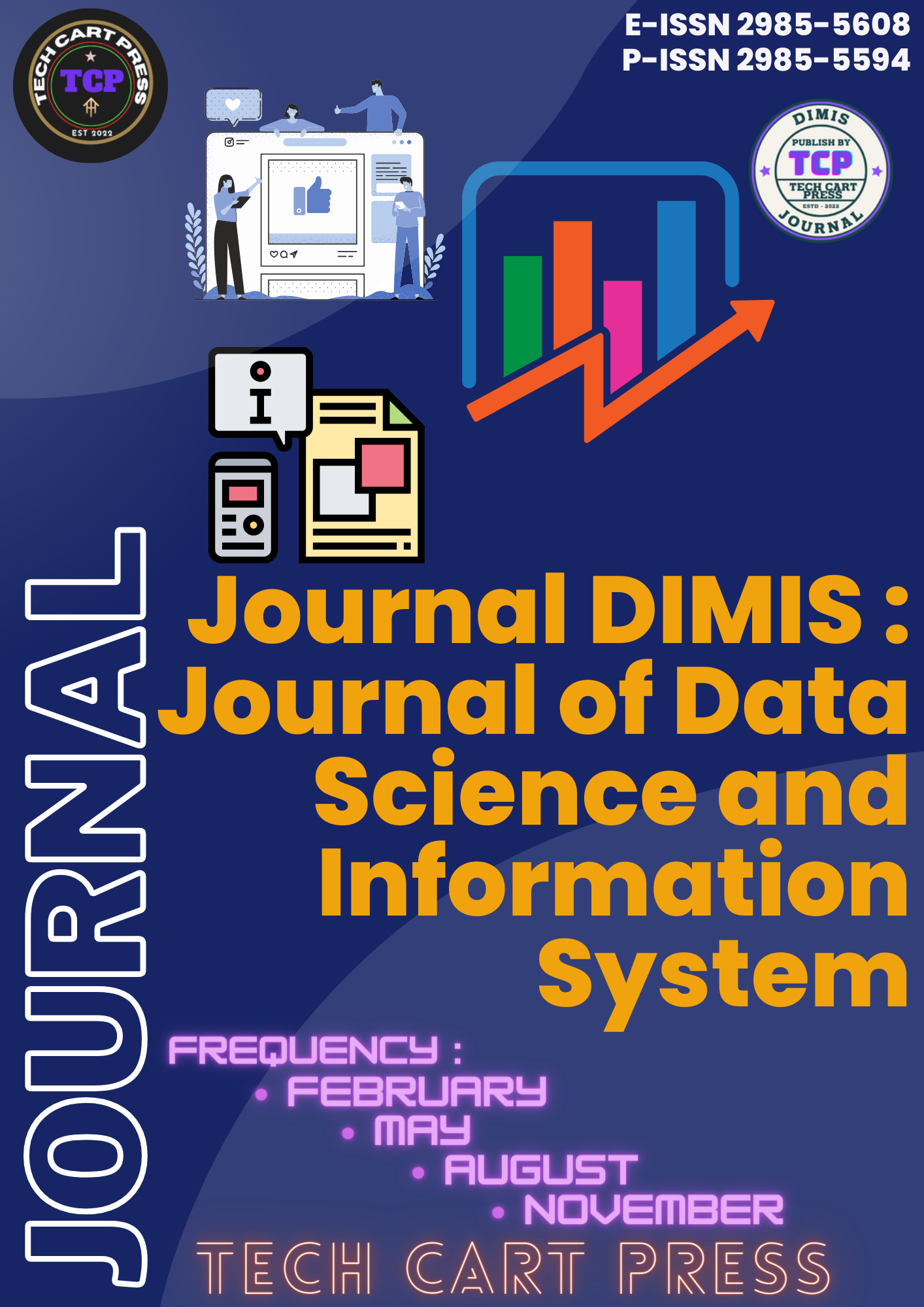Pemodelan Aplikasi Pramuka Ambaraka Berbabis Web Menggunakan ISO 25010
Abstract
In this pandemic, many schols and places of learning are carried out online, many things are not understood by students for online learning, either the unavailability of adequate internet services, or the lack of maximum understanding of students when studying online. The Ambaraka website is a platform that provides web-based Scouting lessons that can be accessed by anyone. This Ambaraka website is a learning program aimed at Sman 12 Bandar Lampung schools, The Ambaraka website uses the ISO/IEC 25010 method. ISO/IEC 25010 is the evaluation method used in this study with an evaluation focus on aspects of. Performance Efficiency, analysis using the GTMetrix site with results of 92% Performance with grade B, but in the Structural section it only gets 75% due to the large number of images and the size is too large.
References
I. Adriansyah, M. D. Mahendra, E. Rasywir, and Y. Pratama, “Perbandingan Metode Random Forest Classifier dan SVM Pada Klasifikasi Kemampuan Level Beradaptasi Pembelajaran Jarak Jauh Siswa,” Bull. Informatics Data Sci., vol. 1, no. 2, pp. 98–103, 2022.
V. Y. P. Ardhana, “Analisis Usability Testing pada SITIDES Menggunakan System Usability Scale dan PIECES Framework,” Bull. Informatics Data Sci., vol. 1, no. 2, pp. 89–97, 2022.
S. Setiawansyah, A. T. Priandika, B. Ulum, A. D. Putra, and D. A. Megawaty, “UMKM Class Determination Support System Using Profile Matching,” Bull. Informatics Data Sci., vol. 1, no. 2, pp. 46–54, 2022.
E. Wicaksana, “Efektifitas Pembelajaran Menggunakan Moodle Terhadap Motivasi Dan Minat Bakat Peserta Didik Di Tengah Pandemi Covid -19,” EduTeach J. Edukasi dan Teknol. Pembelajaran, vol. 1, no. 2, pp. 117–124, 2020, doi: 10.37859/eduteach.v1i2.1937.
S. Ahdan and S. Setiawansyah, “Pengembangan Sistem Informasi Geografis Untuk Pendonor Darah Tetap di Bandar Lampung dengan Algoritma Dijkstra berbasis Android,” J. Sains dan Inform. Res. Sci. Inform., vol. 6, no. 2, pp. 67–77, 2020.
A. Aldino, A. Saputra, A. Nurkholis, and S. Setiawansyah, “Application of Support Vector Machine (SVM) Algorithm in Classification of Low-Cape Communities in Lampung Timur,” Build. Informatics, Technol. Sci., vol. 3, no. 3 SE-Articles, Dec. 2021, doi: 10.47065/bits.v3i3.1041.
H. Sulistiani, “Rancang Bangun Aplikasi Presensi SMS Gateway Berbasis Web Dengan Framework Codeigniter Pada SMKN 1 Trimurjo,” J. Inform. dan Rekayasa Perangkat Lunak, vol. 1, no. 1, pp. 43–50, 2020.
A. Azizah and K. Nasution, “Penerapan Metode Promethee Pada Aplikasi Penerima Kartu Keluarga Sejahtera (KKS),” Bull. Informatics Data Sci., vol. 1, no. 1, pp. 30–37, 2022.
J. Hutagalung, A. F. Boy, and M. A. Yahdie, “Implementasi Metode Weighted Aggregated Sum Product Assesment (WASPAS) dalam Pemilihan Oli Mesin Sepeda Motor 150 CC,” Bull. Informatics Data Sci., vol. 1, no. 2, pp. 55–63, 2022.
K. Munthe, T. R. A. Syahputra, A. A. Pasuli, and M. A. Hasibuan, “Sistem Pendukung Keputusan Pemilihan Pegawai Honorer Kelurahan Medan Sinembah Menerapkan Metode ROC dan MOORA,” Bull. Informatics Data Sci., vol. 1, no. 1, pp. 20–29, 2022.
A. Yanda and M. Mesran, “Penentuan Penerima Bantuan Pangan Non Tunai (BPNT) Menerapkan Metode Multi Objective Optimization on the Basis of Ratio Analysis (MOORA),” Bull. Informatics Data Sci., vol. 1, no. 2, pp. 38–45, 2022.
M. Mesran, M. Kom, J. H. Lubis, and I. F. Rahmad, “Penerapan Metode Multi-Objective Optimization on the Basic of Ratio Analysis (MOORA) dalam Keputusan Penerimaan Siswa Baru,” Bull. Informatics Data Sci., vol. 1, no. 2, pp. 73–80, 2022.
Copyright (c) 2023 Ariyadi Dwi Saputra, Lathifah Lathifah

This work is licensed under a Creative Commons Attribution-ShareAlike 4.0 International License.





